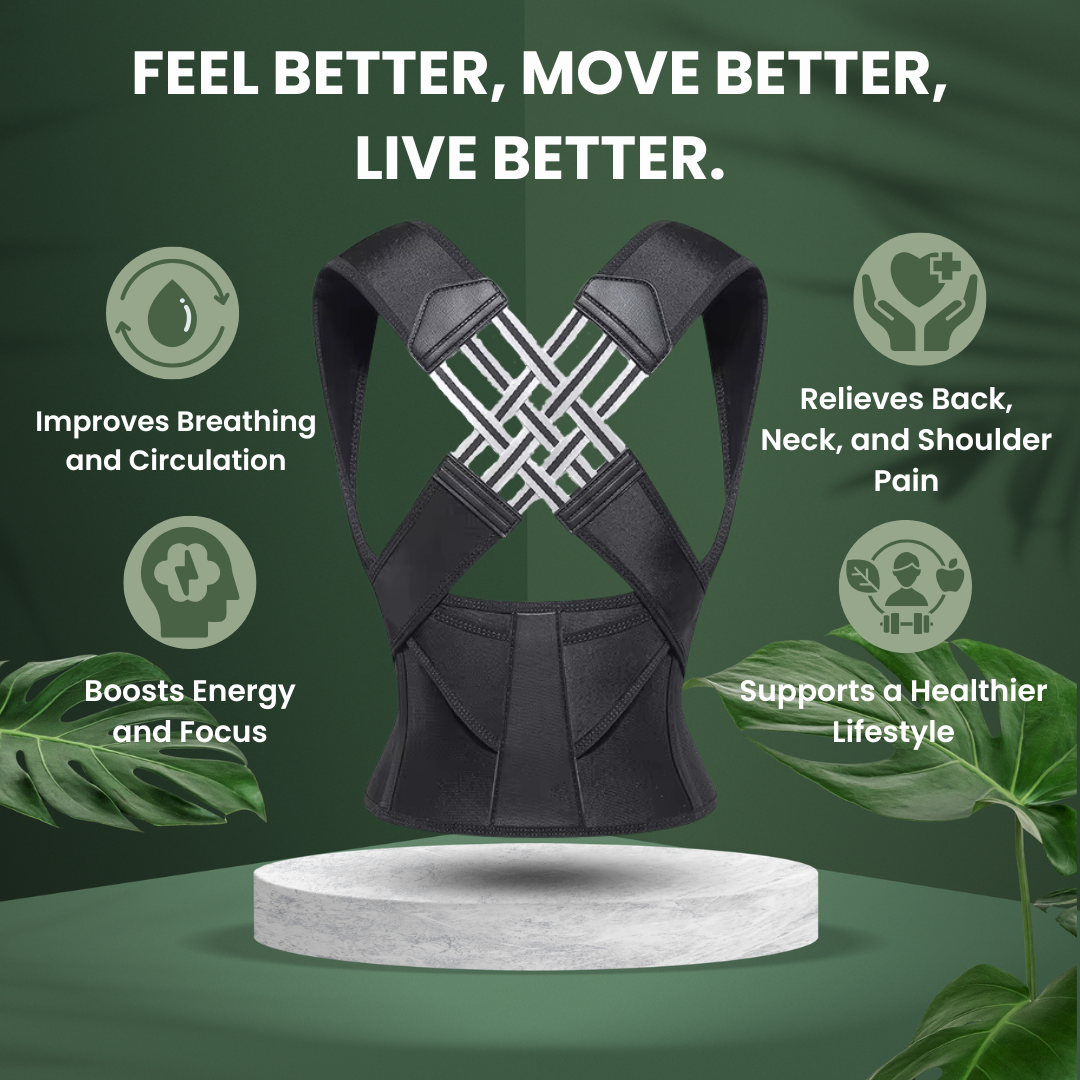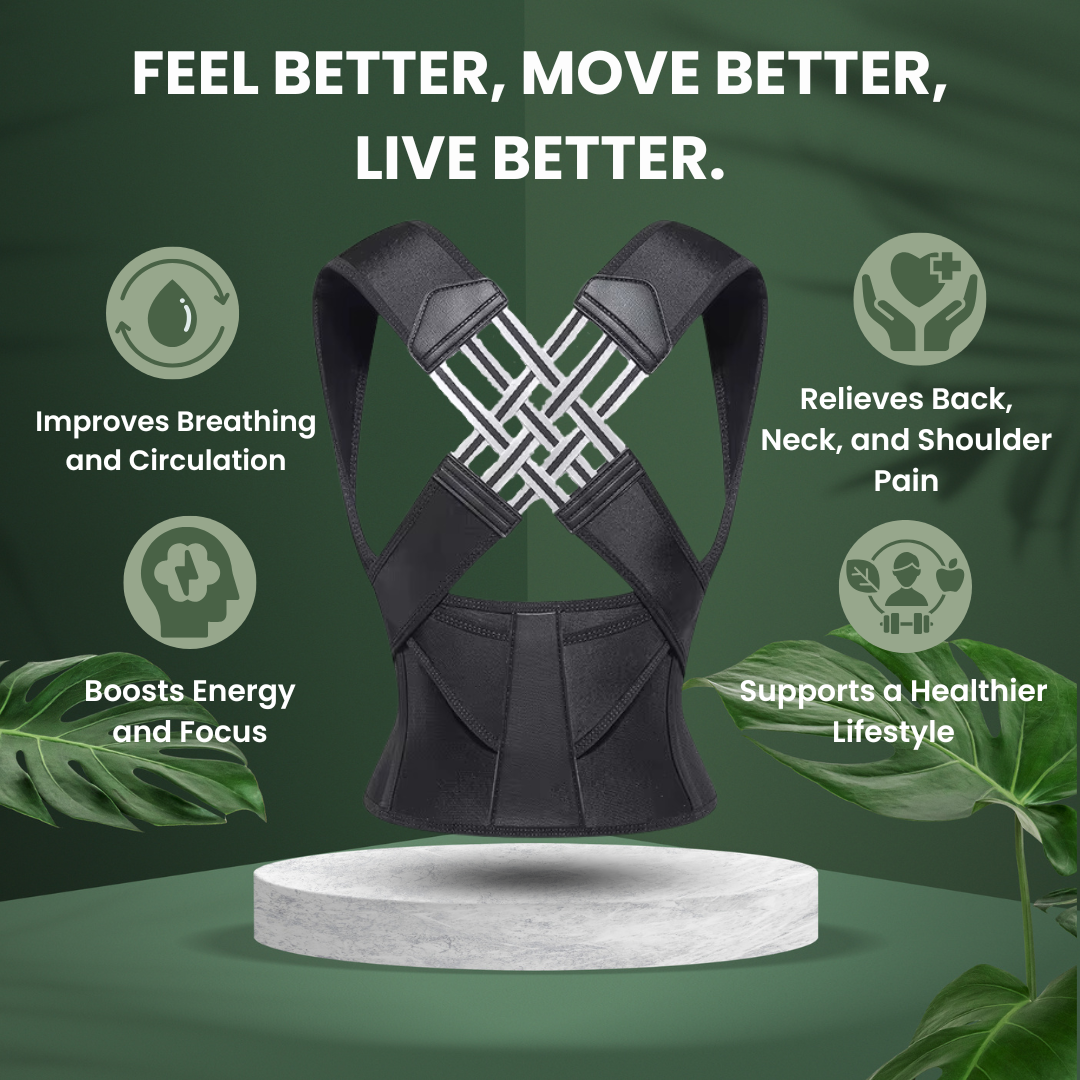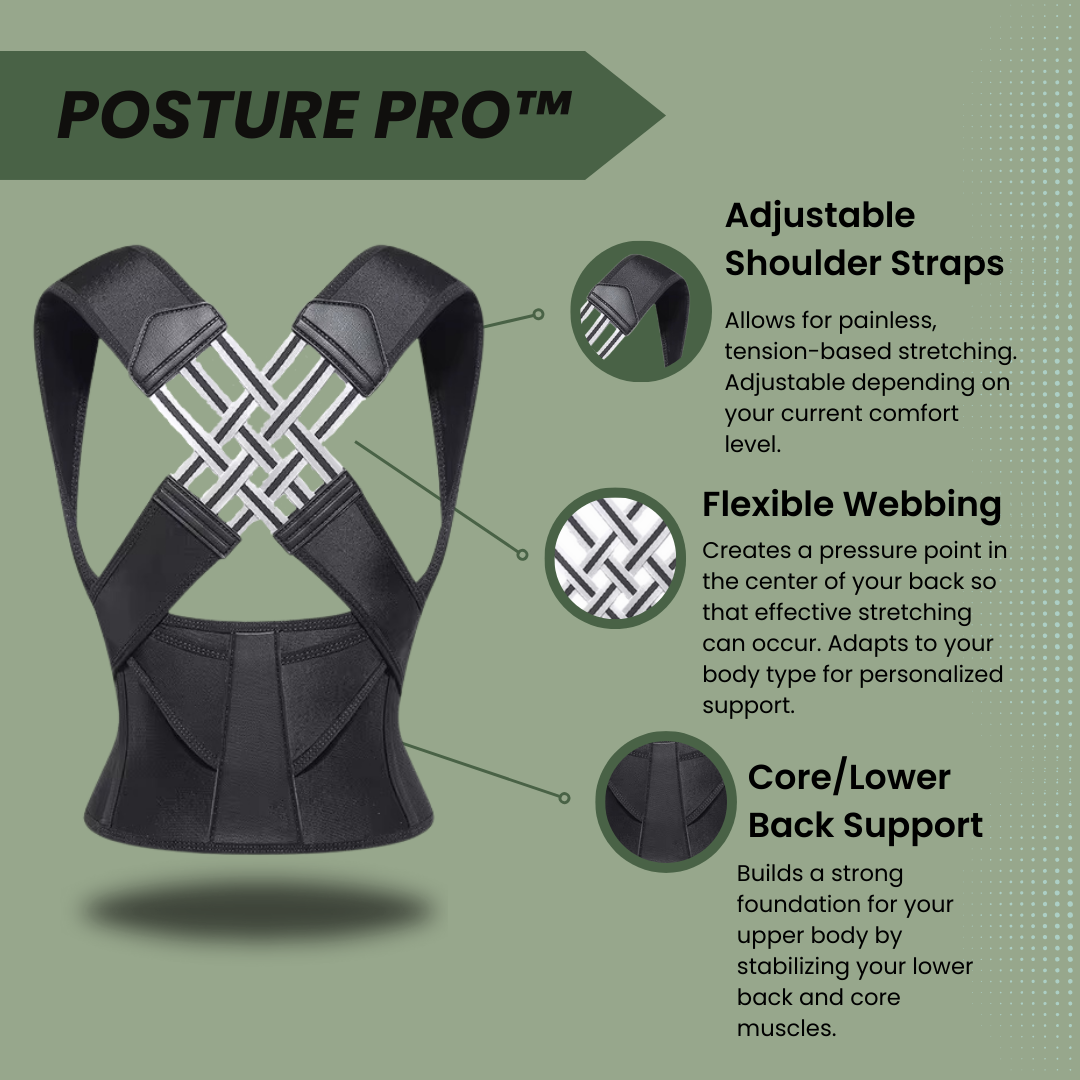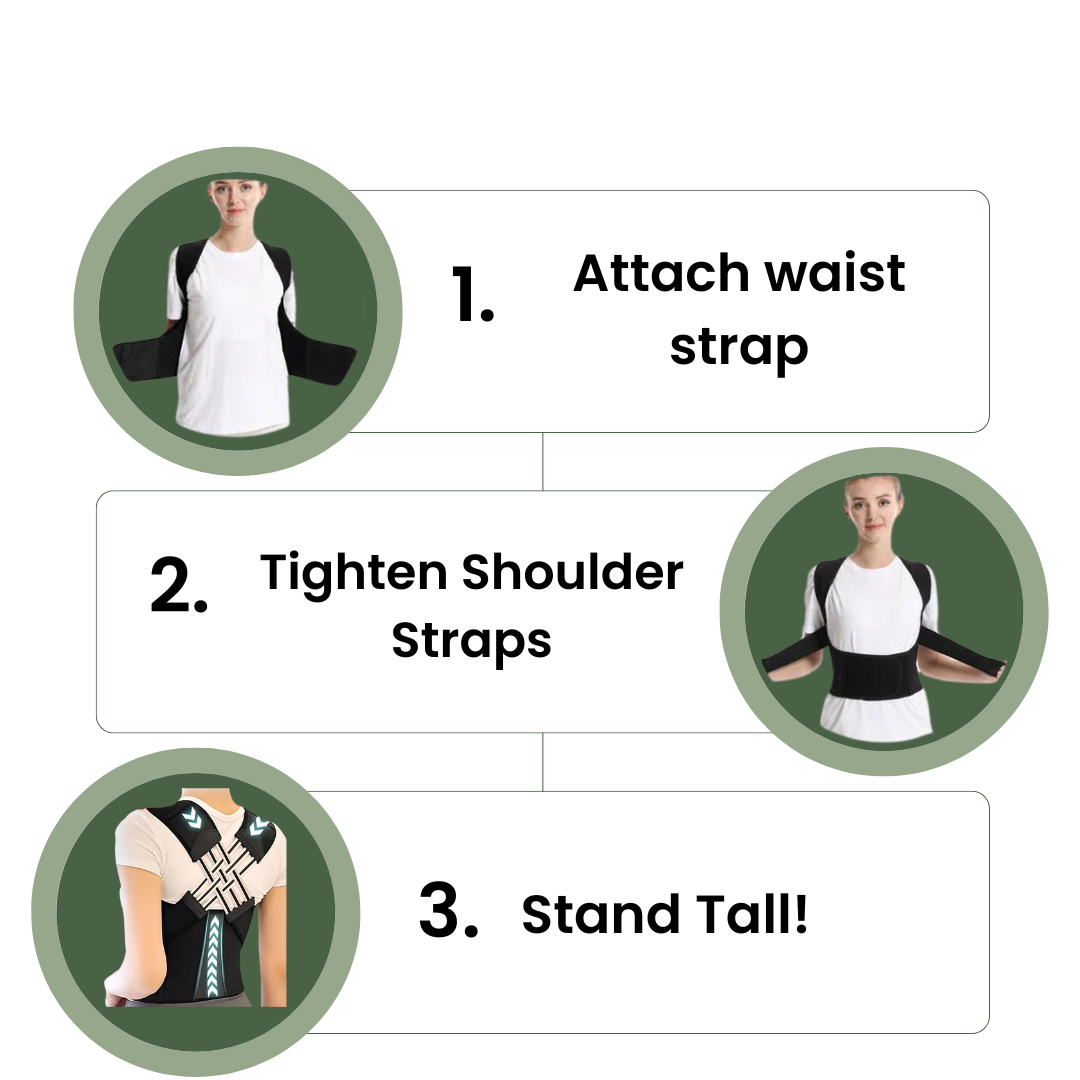Do you feel tired or have back pain often? Good posture is key to fixing these issues. Our guide will show how better posture can help your body and mind. Let's start!
Key Takeaways
- Good posture reduces back pain and neck pain by aligning the spine properly.
- Maintaining a straight stance while standing or sitting enhances appearance and joint function, resulting in reduced joint damage.
- Improved posture allows for deeper breaths by expanding the chest, facilitating increased lung capacity and simplifying physical tasks.
- Enhanced confidence and diminished stress are psychological advantages of maintaining proper body alignment.
- Sustaining proper posture elevates energy levels during the day and improves performance in activities.
What Is Good Posture?

Good posture means keeping your body parts in the right alignment when you stand, sit, or lie down. This requires the right muscle tension to support this alignment. Your spine plays a big role here.
It should form an "S" shape with three natural curves: at your neck, upper back, and lower back. For good standing posture, make sure your head sits right above your spine instead of tilting forward or sideways.
Your shoulders need to be relaxed but pulled back slightly, and for sitting posture, it's vital that your feet are flat on the ground with hips and knees at a ninety-degree angle.
“Visualize an invisible string pulling you up from the tailbone through the spine to the top of your head.”
This picture helps in understanding how to distribute body weight evenly across both feet when standing and encourage core muscles’ strength during sitting or moving activities. Good posture isn’t just about looking confident; it’s about creating balance in our bodies by using our bones and muscles most efficiently.
Physical Health Benefits of Good Posture
Good posture can help reduce back and neck pain, allowing better alignment of the spine. It also contributes to improved joint health and motion, providing support for muscles around the spine.
Reduced back and neck pain
Standing and sitting the right way makes your back and neck hurt less. Over 25% of people who work get low back painevery year because they don't sit or stand well. If you keep your spine straight, it takes pressure off your bones.
This means you're less likely to get osteoarthritis and feel chronic pain. At first, fixing how you sit might feel weird, but it helps a lot in the long run.
Slouching is bad because it puts more stress on your spine. Good posture means your joints are not being overworked. When your joints work like they should, you won't have as much pain in your back or neck.
So keeping a straight back when you're at your desk or standing can really cut down on the ache you feel at the end of the day.
Improved joint health and alignment
Maintaining a good posture is instrumental in joint health, reducing the strain on crucial joint regions and lessening their rapid wear. By maintaining correct alignment during standing or sitting poses, you aid in positioning your bones well, thereby decreasing the possibility of joint discomfort and skeletal problems.
Body alignment preservation is essential for maintaining the health of our joints and bones.
Also, maintaining an upright posture requires the activation of your core muscles, which in turn provide support to your spine. This does not just strengthen these muscles but also ensures everything stays in place, fostering improved overall well-being.
Optimal alignment is key for unrestricted movement and preventing injuries that may occur from squatting or stretching excessively without proper backing from postural muscles.
Enhanced breathing and lung capacity
Good posture can lead to enhanced breathing and lung capacity. When you maintain good posture, your chest opens up, allowing for better airflow into the lungs. This facilitates deeper breaths and improved respiratory function.
By standing or sitting with proper alignment, you allow your lungs to expand fully, which helps increase their capacity over time. Moreover, good posture aids in optimizing cardiovascular performance during physical activities like walking, running, and swimming by improving how well your body takes in oxygen.
It also allows classical breathing exercises to significantly enhance chest expansion.
In summary, when you practice good posture consistently, it positively impacts your breathing and lung capacity by enabling deeper breaths and enhancing overall respiratory function.
Mental Well-Being Benefits of Good Posture
Good posture can lead to better mental well-being. It contributes to increased confidence, reduced stress, and a more positive mood. For further insights into the benefits of good posture on mental health, continue reading the blog post on our website.
Increased confidence and self-esteem
Good posture sets the stage for increased confidence and self-esteem. When you stand tall and maintain proper body alignment, it conveys a message of assurance to others, while also persuading your brain that you are capable.
Studies have shown that assuming powerful poses not only enhances confidence but also reduces unfavorable thoughts.
Indeed, research published in *PLoS One* uncovered that good posture can actually enhance feelings of confidence and alleviate adverse emotions, particularly in women. So, standing tall not only gives the appearance of confidence - it can genuinely make you feel more confident too.
Better mood and reduced stress
Good posture isn't just beneficial for physical health. Studies indicate that it contributes to decreased stress and improved mood. Standing up straight prompts the body to produce more testosterone, associated with heightened confidence and reduced cortisol levels, the stress hormone.
Studies have found that maintaining good posture for as little as two minutes not only enhances feelings of empowerment but also boosts risk tolerance. Therefore, the next time you're feeling stressed or low, consider adjusting your posture - it may provide the mood lift you're looking for.
Everyday Life Improvements with Good Posture
Improving your posture can lead to better energy levels and increased productivity throughout the day. Learn more about how good posture affects your everyday life benefits here.
Improved energy levels and productivity
Good posture can help improve your energy levels and productivity. When you sit or stand with proper alignment, it can reduce fatigue and help you stay focused. It also supports confidence and self-esteem, leading to better performance in your daily tasks.
Studies have shown that good posture is linked to increased productivity, which means maintaining a strong and balanced posture could significantly impact how much you achieve in a day.
When you maintain good posture, the muscles work efficiently, allowing for better blood flow and oxygen supply to the brain. This results in increased alertness and mental clarity, contributing to enhanced productivity throughout the day.
So whether you're working at a desk or engaging in physical activities, being mindful of your posture can lead to improved energy levels and overall better performance.
Better form during physical activities
Good posture during physical activities is vital for preventing injuries and maximizing the effectiveness of movements. It helps in maintaining proper alignment, reducing strain on muscles and joints, and improving overall performance.
Athletes who prioritize good posture enhance their balance, decrease the risk of overuse injuries, and improve their endurance. Moreover, it allows for optimal engagement of core muscles during exercises like squats or calf raises.
When individuals maintain correct form during exercise or sports activities such as weightlifting or running, they can optimize their body mechanics to generate power efficiently. This not only prevents unnecessary stress on the joints but also fosters a better range of motion and reduces muscular imbalances.
By ensuring that the spine is in alignment and core muscles are engaged during physical activities, individuals can significantly reduce the risk of injury while enhancing overall performance.
Final Word
Incorporating good posture into your daily life brings numerous benefits. It helps relieve back and neck pain, promotes better breathing, and enhances joint health and alignment. Beyond physical well-being, it also uplifts mental state by boosting confidence, reducing stress, and improving overall mood.
Practicing good posture can positively impact everyday activities, from increasing energy levels to improving productivity. By nurturing these habits consistently, you pave the way for a healthier and more confident lifestyle.
FAQs
1. What are the benefits of maintaining a good posture?
Good posture benefits include proper spine alignment, increased lung capacity, and improved energy levels. It can also boost your mood and confidence while reducing the risk of posture-related injuries.
2. How does good posture affect my muscles?
Maintaining a good sitting or standing posture engages core muscles, back muscles, side muscles, pelvis muscles, buttocks muscles which leads to muscle strength improvement. It helps in body weight distribution and promotes better range of motion.
3. Can improving my posture help with pain relief?
Yes! Good postural habits can alleviate lower back pain, neck pain and shoulder tension often associated with poor posture. Posture correction exercises focusing on strengthening postural muscles can prevent repetitive strain injury too.
4. Does having a good posture influence my overall health?
Absolutely! A neutral spine achieved through correct body alignment supports joint health and bone health; it even aids in enhancing balance and preventing herniated disks.
5. Are there any specific exercises for improving one's posture?
There sure are! Strengthening exercises that target the core strength such as squat down exercise or bear hug exercise involve multiple muscle groups including abdominal muscles, pectoral (pecs)gluteal (buttocks), lower-extremity (lower leg), arms etc., promoting an ergonomically sound spinal posture.
6. How do I know if I need to improve my current postural habits?
Signs you might have poor postural habits include frequent back pain or neck pain , difficulty breathing due to shortness of breath caused by reduced lung capacity , experiencing carpal tunnel syndrome symptoms like numbness in hands or wrists from incorrect typing position - these could all be red flags indicating you need some form of corrective action.




















